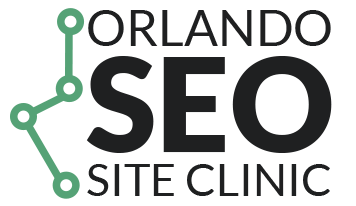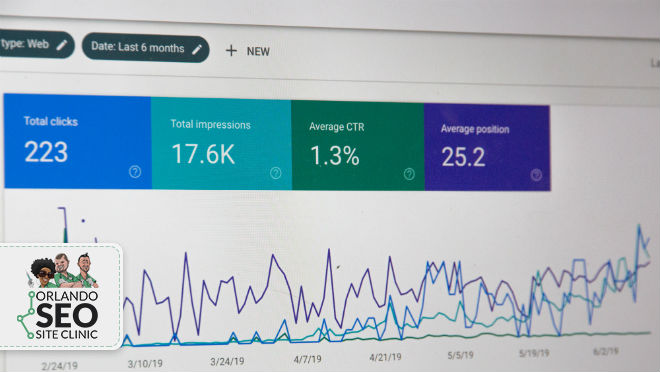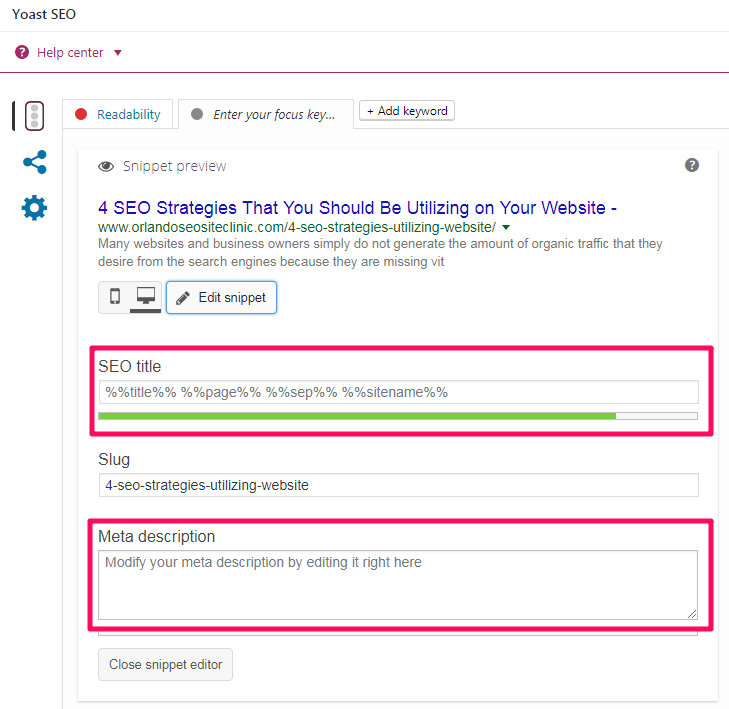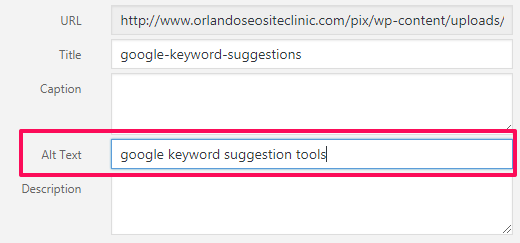Many websites and business owners simply do not generate the amount of organic traffic that they desire from the search engines because they are missing vital steps in the SEO process. The good news is, SEO doesn’t have to be complicated, and you can indeed start gaining more traction if you just follow a few wise methods.
In this post, we will uncover 4 SEO strategies that you should be utilizing on your website design.
1. Optimizing your SEO Tags
When we say SEO tags, we are explicitly talking about title tags, meta descriptions, header tags, and image alt tags. These really build the foundation and act as a “skeleton” for your website from an SEO standpoint. You really want to make sure that these tags are optimized for each page as this will give you a better chance of showing up/ranking highly in the SERPs.
Let’s look at these in a bit more detail to get a better understanding of where these show up and how they will help improve your SEO.
- Title Tags: The title tags are seen in the search results as the blue clickable text when you perform a search query. These hold a lot of weight in the eyes of Google and should be optimized with your most relevant and essential keywords in place. Do not keyword stuff here though, make sure your title tags read naturally to human visitors as well as search engines. The recommended length for these is as close to 70 characters as possible without going over.
- Meta Descriptions: Your meta descriptions are seen below the title tags in the search results and describe what a particular page is about. These should be around 150-160 characters in length without going over. They should also be compelling and engaging to encourage users to click-through to your website.
- Header Tags: You header tags are the main titles/heading above a block of text on a page or blog post. They can be used in a hierarchy (H1, H2, H3, etc.) and should contain your target keywords as they hold a lot of SEO value.
- Image Alt Tags: Each image on your website should be optimized with an image alt tag. This provides webmasters additional opportunity to improve their on-site SEO only by adequately tagging your pictures.
2. Copy Optimization & Internal Linking
Any existing copy/content you have on your website should be optimized with SEO best practices in mind. You want to make sure the copy on your website contains keyword phrases sprinkled in there appropriately to add more relevancy to the page.
Just like your SEO tags, you do NOT want to keyword stuff here.
Make sure this looks natural to Google and only add keywords where they make sense. You will also want to internally link to other pages of your website within your content.
This helps spread some link equity and juice to various pages of your website. It also helps users navigate your site better and can help in reducing bounce rates as well.
3. Consistent Content Generation
We’ve all heard it before, but content truly is king!
And especially if you’re generating it consistently…
If you are not publishing content on a weekly or monthly basis, your organic traffic will be tough to grow. Google favors webmasters who keep their website updated with fresh and unique content consistently.
They would instead send people to a blog that publishes once a week, compared to one that hasn’t released an article in the past 12 months. Continuously adding content to your website also allows you to target different keyword phrases and can be a great plan of attack to increase your overall exposure in the major search engines.
4. External Link Building
We talked a little bit about internal linking within your content but now let’s switch gears to external link building. Building quality backlinks on other websites really bring an entire SEO campaign together, assuming you’re following the steps laid out above as well. Google looks to backlinks as a significant ranking factor and how important/reputable a website looks.
Think about it for a second, if other sites are linking to your domain, that must mean you’re providing some sort of value and Google loves that. There are many different ways to build backlinks depending on your website/business type, but a few to consider are a guest/sponsored content, business citations, competitor backlink analysis, unlinked brand mention reclamation, and roundup blog posts.
Grow Your Business With Great SEO Strategies Today!
To conclude, SEO is by no means an overnight process and definitely takes persistence and excellent tuning over time. However, if you stick with it for the long-term and focus on optimizing your meta tags, copy, producing content and link building, your results should follow.
Like any marketing initiative, make sure to track your progress and learn from the data that presents itself.
Author Bio
Evan Hoeflich is the owner of EvanHoeflichMarketing.com where he writes about blogging, SEO, Internet Marketing strategies and more. Evan has been an Internet Marketer since 2007 and when he’s not working on his business he enjoys hiking, golf and being outdoors.



